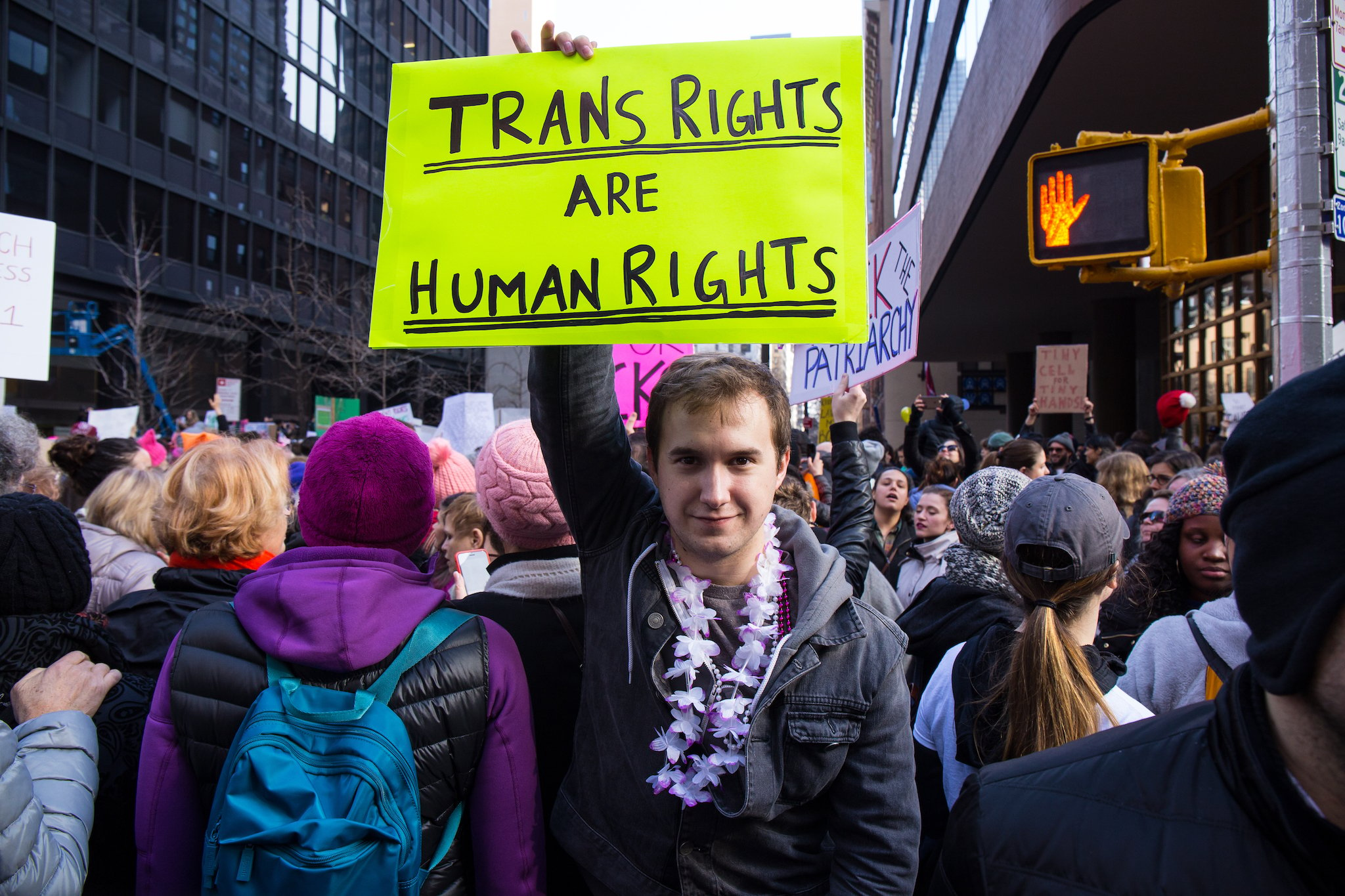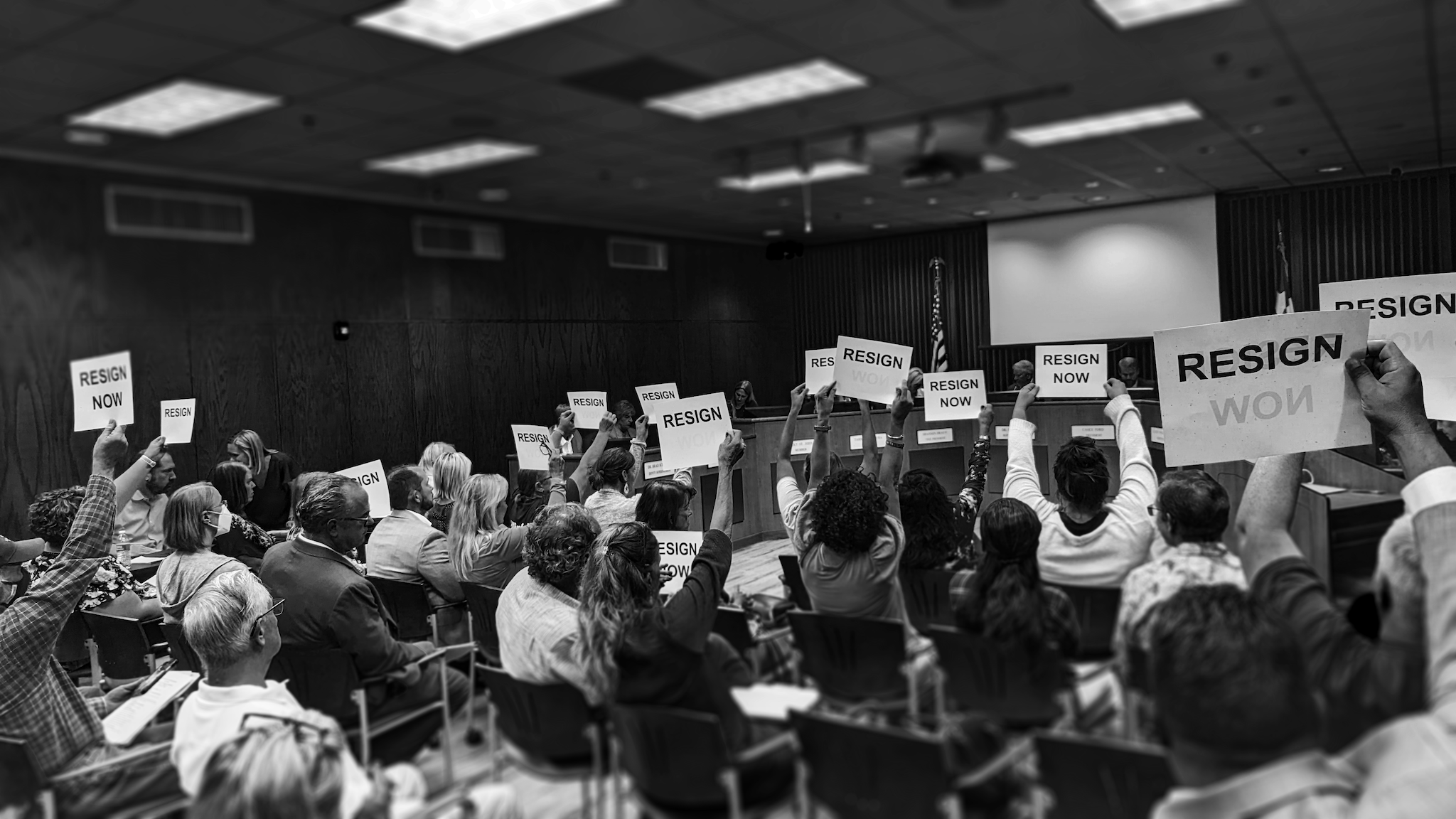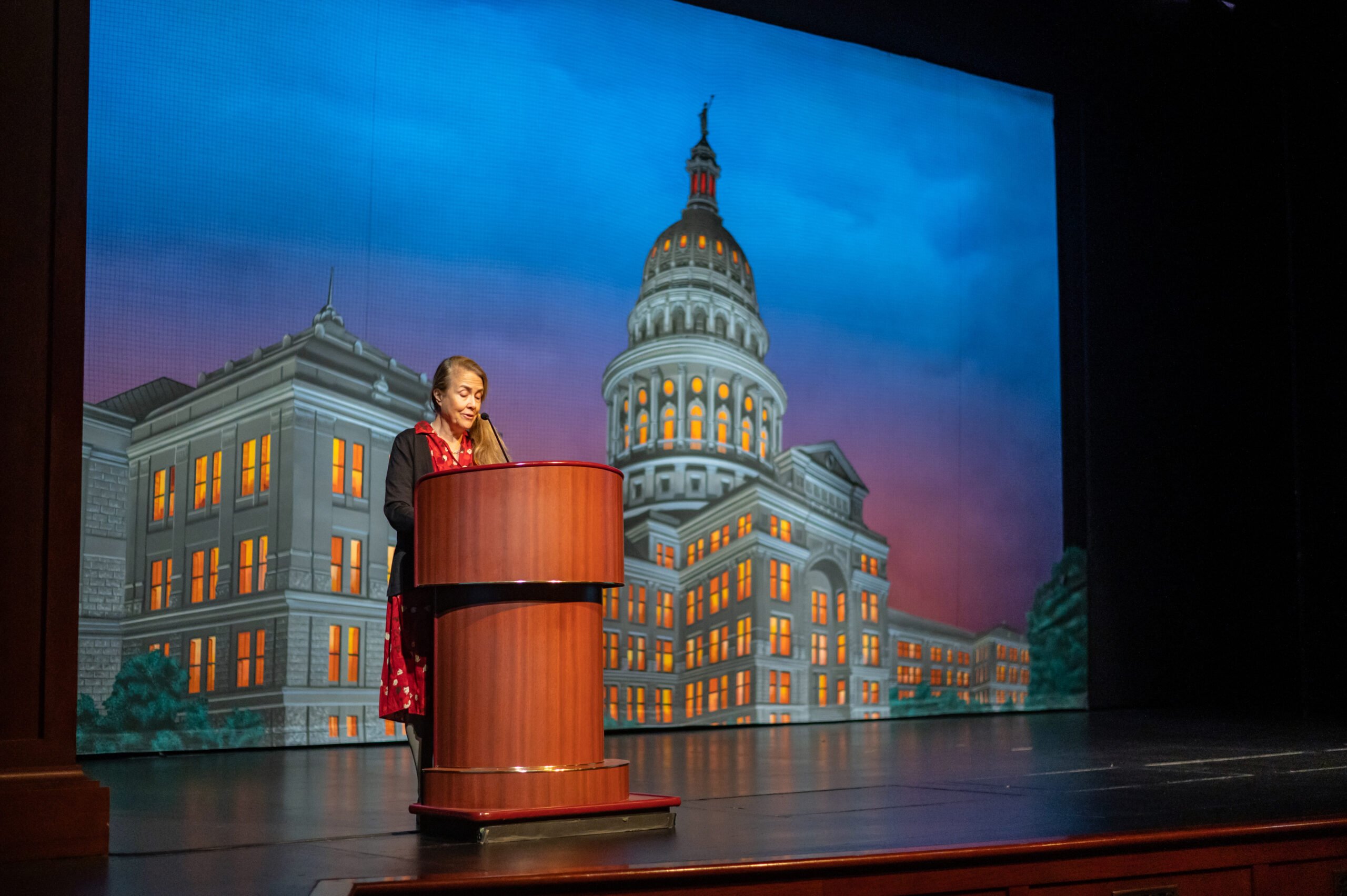
Deep in the Hearts of Children: 50 Years of Public Poetry
Our outgoing Poetry Editor reflects on decades of artistic expression and education in the Lone Star State.
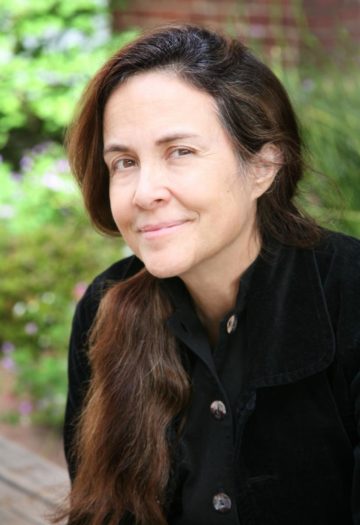
A version of this story ran in the May / June 2023 issue.
Editor’s Note Naomi Shihab Nye was Poetry Editor at the Texas Observer for the past 28 years.
A sixth-grader wearing a yellow floral dress waved me down, then sidled up to my car window in Albany, Texas. I was pulling out of her school parking lot for the last time.
“Thanks for coming,” she said. “I always knew there had to be another poemist out there somewhere.”
In 1974, my fiction writing professor at Trinity University in San Antonio, Robert Flynn, had casually mentioned a fledgling program being sponsored by the Texas Commission on the Arts (TCA). Called Artists in Education or Artists in the Schools, this program sent practicing artists in various disciplines into classrooms around the state (and many other states, such as New York, California, and Hawai’i) for short residencies, to encourage kids of all ages. I was about to graduate and had few plans for the future aside from paying back my college loan and writing.
Like a true professional, I traveled to Austin for my interview without a CV or single sample of my poetry. My dad drove me. I had lots of enthusiasm, though, and got the job on the spot. Into the schools of Texas!
“I always knew there had to be another poemist out there somewhere.”
Did I have any experience? Working for a summer journalism institute, literary magazine division, with high school writers at Trinity was all. Had I taken any education courses? Not one. Zen Buddhism, handmade pottery, Sufism, art history, hymnology—perfect preparation. Did I have any books out? Of course not. I was 22. We’d made construction paper poetry booklets when I was in second grade, back in the unheard-of province of Ferguson, Missouri. But I’d been sending my poems to magazines since I was 7 and believed anyone could do it. Certainly a little more poetry could help us all better live our lives.
I said I’d like to do it for two years.
My only local mentor, Rosemary Catacalos of San Antonio, had been working in schools for a few years already. “Check in with her,” the TCA people suggested. She had never been to college, had worked as a journalist, and would go on to become a Wallace Stegner Writing Fellow, the poet laureate of Texas, and my dear friend for 51 years. Rosemary said things like “Just give kids space. Read aloud. Use great examples.” Some Nova Scotians I met on a rainy street in Halifax handed me a Kenneth Koch book, Wishes, Lies, and Dreams, about working with poetry in schools, in which Koch said teaching was not really what took place. “It’s more like letting the children discover something they already have.”
The words just jumped into the quiet. The words blasted into the dark. —Seth Hansford
Driving the back roads of Texas in my old 1965 Mercedes Benz with an open sunroof, a full library of thin poetry books in wooden crates in my back seat, and Townes Van Zandt cassette tapes, the state opened up in front of me. Before computers, email, social media, Google Maps, we visiting artists found all the places we needed to go. For years and years, I would find that poetry lived everywhere—Longview, Del Rio, Abilene, Amarillo. Voices, voices, voices. Corpus Christi kids blew my mind, they were so eloquent. I wondered if it had something to do with living next to that silvery, glittering water. In fact, all the kids were eloquent. Not once did I stumble upon any far-flung Texas community where poetry didn’t already live.
State arts commissions used a matching-funds system to pay for artist residencies—schools paid the other half. The hope was, if a school wished to invite more artists, or wanted a return visit, they would pick up the full bill themselves—this often happened. In those days, artists in the schools were paid no per diem, so some of us chose to stay with hospitable families, so as not to spend too much of our income on motels. I once made a public request for a six-week lodging in Temple, having had no invitations, and a kind woman from Zenith Street stood up in the back row and said I was welcome to her extra bedroom. New friends and relatives appeared everywhere—in Albany, Kingsville, and on a Comstock ranch where, for the first and last time in my life, I would ride a horse to work.
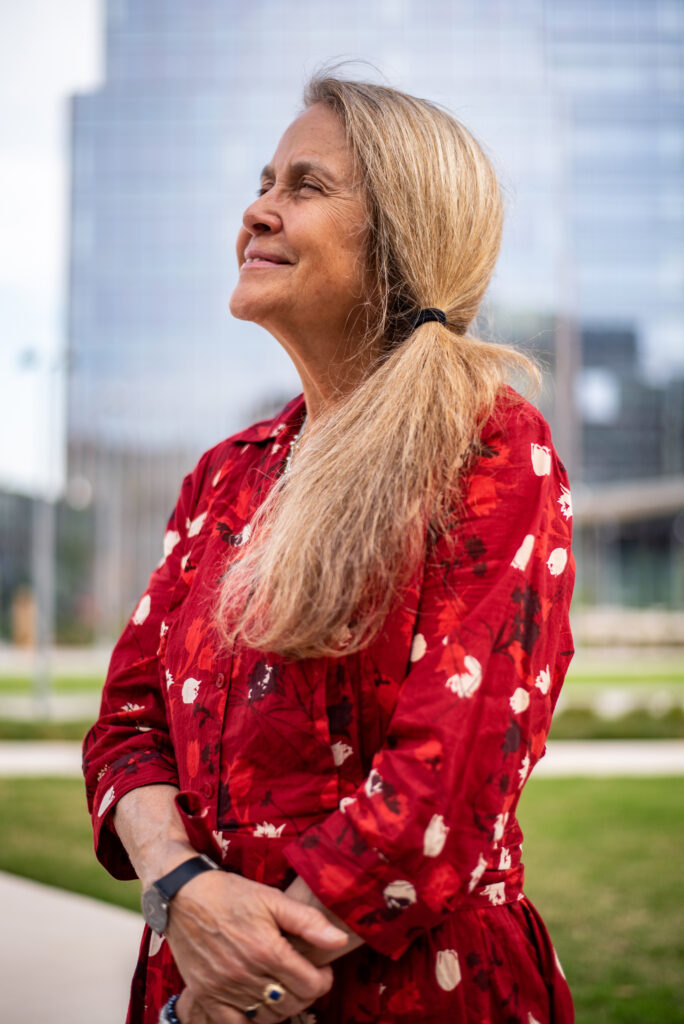
Classroom methods felt so simple—exposure and enthusiasm about writing and poetry were more important than expertise. I did not teach lists of poetry definitions. I did not encourage rhyme or dreaded cinquain or limerick forms. Essentially, I did not teach forms. Forever a proponent of “free verse” or “open form” poetry, I banked on descriptions of topics, discussions of sample poems (always three, so young writers wouldn’t parallel the samples too closely), writing and sharing times. This was long before the TCA would promote the marvelous Poetry Out Loud national competition in memorization and recitation of other people’s poems, continuing today. I worked in public schools, private and parochial schools, large, small, and in-between. I’d often request the “at-risk” students if a school asked me to focus on the “gifted and talented.” Only once did I ever feel scared—when some cowboys trailed me from a Comanche diner to my motel parking lot. I started driving in circles, then drove back downtown for a while, so they couldn’t see what room I entered. Later I pushed the ragged chair in my room up against the door.
We had poetry programs, hallway exhibitions of illustrated poetry, to which parents were invited, handmade anthologies (I would stay up late at night, typing the poems for school print shops), songs written by kids that became part of a marvelous cassette tape project, distributed throughout the San Antonio ISD, and plenty of joy and laughter. A Westside San Antonio principal integrated lines of poetry into every morning’s intercom announcement. Years later when librarians would ask me, “What did you do when kids made fun of one another’s work?” I could honestly say, “To my knowledge, they never did.” One time a teacher made fun of a boy who’d written about his brain, by saying, “I didn’t even realize you had one,” but the students were always respectful in my presence.
I believe my grandmother lives/beyond death, in my mirror.—Brenda L. Burmeister
I don’t recall any fraught conversations or troubles around religion, politics, transgender students, abortions, guns, banned books, etc. Were we smarter then? When the wars in Iraq (to which I was adamantly opposed) kicked off, I recall asking myself what poetry could do. Maybe sharing poems by regular people of Iraq, moms and dads with worries and troubles of their own, might help Texas students think of the human beings everywhere who suffer and dream. Teachers at Hockaday School in Dallas urged me to make an international anthology, including such voices. And my life as an anthologist began.
Of course, when one does the same job for a long time, testimonials materialize. Teachers would report things like, “Johnny started turning in his math homework after that poetry workshop. What does poetry have to do with math?” A San Antonio eighth-grader with an F average in English won the national Scholastic Writing contest in poetry. A girl chased me down in an H-E-B to say, “Just wanted you to know that keeping that observation notebook ended up saving my life.” Another girl I met randomly on a street said keeping a notebook had helped her realize what her life path should be. A mom began weeping one day when she saw me in line behind her at CVS. “Why is it,” she said, “that only once in my life was I invited to share my real voice?”
For any of us who thought poetry mattered in the big picture in the beginning, we only came to think it mattered a lot more than we might have dreamed.
When I was born, it was like a big ocean with one fish. / Then it was like I was not the only one in the ocean. /And when I was bigger, it was like an elephant in a jar.—Homer Soto
I never wanted to “turn people into poets.” I just wanted them to realize how rich their own experience was, how much material they had, to know that writing was their friend, and if they felt comfortable writing things down, their lives would be easier, whatever path they chose. To meet a librarian in George West who sponsored the “Find Your Book” project for seniors, so when they walked across the stage to collect their diplomas, “their” book would be mentioned as their favorite—a kind of handle on identity—was a revelation. Having lunch with students who were having trouble “finding their book,” I suggested local writers—J. Frank Dobie perhaps?—writers from Mexico, cross-cultural writers, and POETRY! Some of them had not even considered poetry.
Years rolled by and unfortunately testing became a lot more important. The rising stress level in classroom curriculums felt palpable. Not one teacher I ever met suggested affection for the standardized testing obsession. It felt as if teachers had lost some of their personal creative agency along the way—the ability to manage their own academic time clocks and expectations for students. I kept remembering the brilliant Texas journalist Bill Moyers saying he had fallen in love with poetry because his high school English teacher in Marshall always read his class a poem right after lunch. It wasn’t for an assignment or a future test, it was simply for pleasure. What happened to pleasure?
“Not one person ever said that writing poetry hurt them.”
Not one person ever said that writing poetry hurt them. It didn’t take that long to write a rough draft of a poem, after all. You could sneak it into a day.
One summer in San Antonio, I accepted a volunteer assignment to visit a community center where kids experiencing trouble with reading and writing were taking a mandatory course. The maintenance director met me outside. “Sorry to say, our air conditioning’s out.” Oh well, Bill Moyers hadn’t gone to high school with air conditioning. Inside the steamy room of middle-school participants, a hip-hoppy guy waved his hand. “Do you think it’s possible to fall in love with a single word?”
Uh, yes I do. Realizing how this might go wrong, I nodded and said, “Do you have such a word?”
He took a breath. “Yes, I do! LYRICAL.” And another great day with language began.
My voice can be a swan/and speak with its wings/but behind it is a shadow/that looks like the world.—Vangie Castillo
Forever I will be grateful to the Texas Commission on the Arts for taking chances on so many of us, for believing in classrooms, kids, and teachers, artists and writers. I will be grateful to the hundreds of Texas schools that accepted and welcomed us. I went on to work all over the world, but Texas schools stayed deep in the center of my heart. Bolstered by TCA’s idealism and vast Texas-sized community spirit, the wandering artists turned in handwritten reports about every residency, containing samples of work, mailing them in large brown envelopes to Austin. I always drew stars next to the address.
Editor’s Note: The bold-text lines of poetry quoted above were written by the students Naomi Shihab Nye met in the TCA visiting artists program.
Two poems from Naomi Shihab Nye
The Road Between San Antonio and Comstock, Texas
I think of it as a bloodline, clean thread stretching west,
mind emptying so gently as it ranged farther from billboards,
chains, farther from access roads, exits, deeper into sky,
that road is why I love this state, despite politics, pronouncements,
the boy called Cody in Comstock who wrote me,
a year after I visited his class,
Basically poetry changed everything,
it made me see where I was,
could you please come back and stay forever?
Finding his letter again thirty years later,
looking him up to learn he died young,
cowboy hat over his downturned face,
I want to say Your roads are still stretching outwards,
the fields you walked through,
we are here soaking in the mystery of time,
trapped in our little houses, scared of a virus,
feeling connected through the spaces, all of these new ways,
and I remember you.
(From Texas Highways, spring 2020)
Texas, Out Driving
The Solid Rock Church of Kerrville
has moved to another location.
It says so on the sign under
its name – Solid Rock.
Also the entire town of Comfort
appears to be for sale.
this does not feel comforting at all.
How many times we drove these curves,
pale fence posts, bent cedars…
but nothing needs us here.
Nothing we said, thought, forgot,
took root in the ditch around the bend.
I always want to stop at historic markers,
see what happened long before, but
the pull of motion keeps a car going,
passing by till next time,
which soon won’t come,
even when everything we know
says slow.
(From The Poetry Friday Anthology for Middle School, edited by Sylvia Vardell & Janet Wong, 2013)

